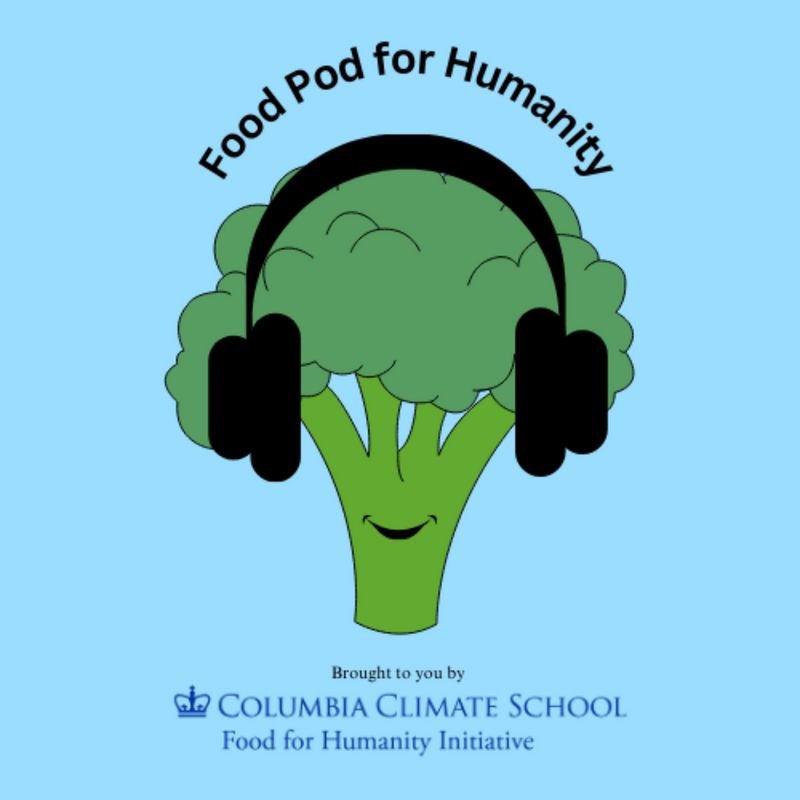FOOD BYTES IS A (ALMOST) MONTHLY BLOG POST OF “NIBBLES” ON ALL THINGS CLIMATE, FOOD, NUTRITION SCIENCE, POLICY, AND CULTURE.
Sunset in Timor Leste
Spring has sprung here in Gotham City, as the Sound Furies sung in Pishon. Yet the air feels heavy and unsettled. The political landscape may be fraught, the trajectory uncertain, but we cannot succumb to despair. Ben Okri wrote in his poem, Arequipa:
To discover
You still have
A world
To make
At sunset
Sobers
The stones.
They may try to dismantle, to divide, to darken the days ahead—but they cannot take the sunrises and sunsets from us. They cannot take our will to build, to dream, to make the world better. And so, dear readers, we keep going.
Onto some interesting news and fantastic science (yay for science being essential…) produced over the last month.
In the news and media:
Grist pontificates how the US government's wobbly tariffs will impact food prices and your grocery bill. Bottom line? It ain’t good. IFPRI modeled how tariffs would impact trade flows. Bottom line? Again, it ain’t good. Their modeling suggests that imposing 25% tariffs on Mexico and Canada will cause food exports to the U.S. to decrease by 46.4% and 60.5%, respectively, with impacts across a range of imports, including fruits and vegetables, processed foods, and meat and fish. Maybe food, like eggs, should never have been cheap…
With all these rampant food price increases, maybe we will have to start eating lab-grown meat, but don’t hold your breath if you live in Mississippi.
But if you are eating vast amounts of meat, according to Vox, you can blame universities. Hell, we are catching all the heat these days - Bring. It. On. Yet, the same news outlet also blames pharmaceutical companies.
Another hit to food systems brought on by the new administration is the 1 billion dollar cuts to farmers supporting school meals and food banks. Sorry for those farmers who thought he had your back.
Novo Nordisk (the makers of Ozempic) has started a foundation and is beginning to fund large-scale global health research. It is too bad that the head of their obesity program is a paid advisor to confectionary company Ferrero, along with relationships with McDonalds and Nestle. Talk about conflicts of interest…
The Economist is calling out Ethiopia's prime minister, Abiy Ahmed’s claims that the country has become the breadbasket of Africa.
Speaking of agriculture, no one seems to agree with what regenerative agriculture is exactly.
There are so many wonderful tributes to the great Joan Gussow, who passed away at 96 - yes, good nutrition does pay off. She was a pioneer, started the discipline of “sustainable diets,” and spent her life at Teachers College at Columbia University. She inspired many at the university and across the world.
I was so pleased to see Flow win the Oscar for Best Animated Series - a film of hope amid climate change. It seems pets can’t get enough of it either.
On climate change, perhaps it’s time for better labels that inform us of the greenhouse gas footprint of foods.
And a shoutout to Timor Leste, one of my favorite countries. There are always fits and starts with new democracies. I am keeping my fingers crossed for them.
Among scientific publications:
Around the third or fourth month of the year, peer-reviewed scientific publications kick it up a notch. The slowdown of the holiday season is in the rearview mirror, and the pace of what is put out the world seems to have a bit of a boost. This month is no exception, making it hard for me to highlight a handful. I selected a few more unique papers that I thought were enjoyable reads.
The first focuses on avocados. This paper in World Development goes deep into cartels' control of the avocado industry in Mexico. Often touted as “green gold” because of the insanely high demand for avocados north of the border, media has reported that cartels have an inkling to get in on the action. But why do so if drugs are in high demand? This paper looks into whether declining drug revenues have led cartels to go into other agricultural commodities (beyond poppies for heroin). The author found that declines in heroin demand increased homicides among agriculture workers in the avocado industry, along with robberies of trucks carrying avocados for shipment.
Two interesting reflection manuscripts. One by the great Tom Reardon on bucking conventional wisdom using some of his long-standing work done in Asia and Africa on rural nonfarm employment, processed food demands, the role of small and medium-scale enterprises in food supplies, and the supermarket revolution/growth in Asia. The other is by colleagues led out of Vrije Universiteit Brussel that we should not forget history in planning food system transformations, particularly those working on future scenarios. Using three cases in Mozambique, Holland, and Bangladesh, they articulate the importance of taking a historical lens to scenario building.
Heat maps of total agri-food mass flux (kg) across transportation modes by flow type at FAF scale. a–c, Agri-food mass flux by highways, d–f, agri-food mass flux by railways and g–i, agri-food mass flux by waterways. Domestic agri-food mass flux (a,d,g), export agri-food mass flux (b,e,h) and import agri-food mass flux (c,f,i).
I am so thrilled to see more studies that are not just examining the impacts of climate on crops or agriculture but go beyond the farm gate to better understand climate shocks and change in the middle of the supply chain - storage, transport, processing, packaging, and retail. This study in Nature Food maps the transportation of food commodities throughout the U.S. by examining highways, waterways, and railways. They look at cost, carbon emissions, and what they call “path redundancies” (the existence of alternative paths). They find that highways are highly redundant to waterways, cost much more, and emit 60x more carbon. Waterways are the opposite in terms of cost and emissions. Railways are somewhere in the middle. Most food in the US is transported on trucks on highways using diesel fuel. It’s time to start using the vast number of waterways better in the U.S.
Great paper in Global Food Security by Preet Lidder and colleagues at FAO on the importance of innovation and technology in transforming rural places. This sentence resonated with me: “Quick technological fixes are unlikely to succeed; resilient and inclusive rural transformation will come from long-term research and innovation processes that incorporate critical inputs from local and traditional knowledge and are underpinned by supportive policies and social and institutional reforms.” Amen to that, sister. The paper discusses how technology can be used responsibly for lasting, equitable change.
Speaking of rural places, there is a land grab gold rush, and this paper in the Journal of Peasant Studies tries to unpack who is rushing, why, and where. Disaggregating the “who” is not easy - it is not always just a country and is often shadow companies or corporations with international interests. The default is to look at foreign land investors, but these authors also see domestic buyers within countries. Bangladesh has the highest percentage of domestic land deals, but Argentina, by far, has the highest number of both domestic and international (foreign) deals. What is the number one cause/use of these deals? Food. Who dominates in the buying of land? Private companies.
Spatial variation in sediment retention (t/year) benefit by watershed and fisheries catch (kg/year) and seafood meals (number/year) benefits by moku provided by agroforestry restoration
Another interesting paper published in Ocean Sustainability put empirical evidence to this notion of bicultural approaches. These approaches “emphasize the reciprocal restoration of both ecology and culture, elevate indigenous and local knowledge and rights, and align with the call for more just and equitable nature-based solutions.” They use Hawaii as their geography and show that restoration of forests through agroforestry increases sediment retention by 30%, nearshore fishery production by 10%, and cultural connection (as measured through biodiversity conservation and food security benefits).
Love this paper examining the trends of food retail environments and their associations with obesity. In the study, the authors dissected retail sector trends over the last 15 years (2009 to 2023) using 97 countries. Not surprisingly, chain outlet density has increased over time, out-competing non-chain outlets. This is happening rapidly across low- and middle-income countries (speaking of history and Tom Reardon, he described this a while back with the supermarket revolution). They correlate the growth of chain retailers with the sales of unhealthy food products as well as obesity prevalence.
Global changes in the current total cropland area within the SCSs in crop groups. GMC = General Circulation Models (of which there are 8) SCS = safe climate space
Finally! A paper that models the impact of climate change on crop yields that goes BEYOND maize, rice, and wheat. This paper in Nature Food modeled 30 major food crops under different global warming scenarios ranging from 1.5 to 4C. In low latitude areas (i.e., the global south), there will be shifts in the ideal locations to grow these foods, and crop diversity would decline ~50% on croplands around the world between 2 to 3 global warming scenarios. However, in higher latitudes, farmers could grow more diverse foods. This paper argues that we may need to shift northward if we want to keep demand with the pace of growing food and a diversity of foods. The authors state: “Alarmingly, we find that the largest adverse effects on current crop production are observed for crops and crop groups that are important elements of the food supply in their current major production areas…Furthermore, we show that the four global staple crops (wheat, rice, maize, and soybean) face some of the largest reductions in cropland area within the SCS, which underlines the need for diversifying crop production.” This study is more motivation to start looking at different crops and protecting the diversity of the global food basket.
Well, that’s all for this month’s Food Bytes folks! Keep watching those sunrises and sunsets and keep on keepin’ on.











